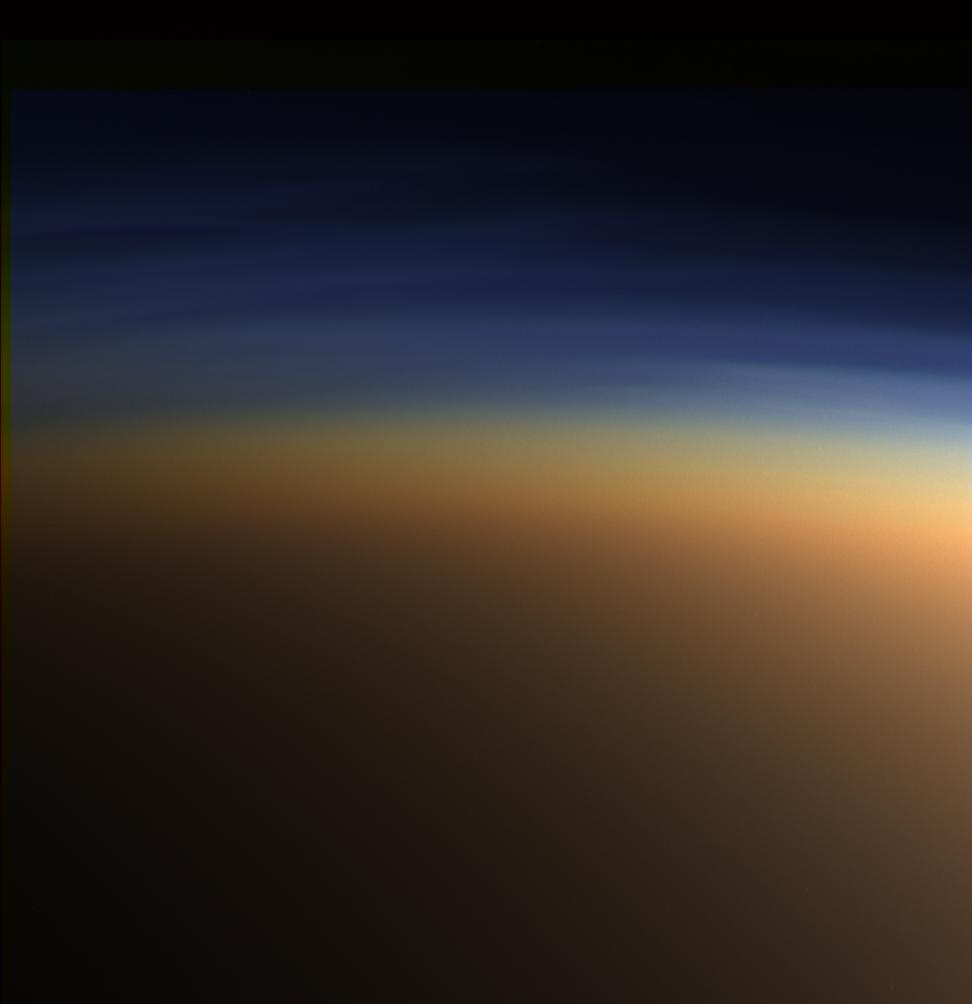- Titan is a large, in many ways planet-like, moon of Saturn.
- Many aspects of Titan bespeak its astrobiological possibilities, although it also has drawbacks in this regard.
- Titan is composed largely of rock and water ice. It receives very little sunlight. Titan has a dense, nitrogen-rich atmosphere that includes organic compounds. Furthermore, it is evidenced as likely having surface lakes of hydrocarbons; its surface is essentially too cold for liquid water, but hydrocarbons are liquid at much lower temperatures than water. It is also evidenced as having subsurface liquids that may be either liquid ammonia or a water-ammonia solution. Titan also has active weather, such as may include hydrocarbon rain, and cryovolcanism. Many of these aspects of Titan suggest astrobiological possibilities, particularly the organics-rich surface liquids that interface with a dense, organics-rich atmosphere, as well as the energy and mixing/reacting effects of its chemically dynamic atmosphere and weather patterns.
- On the other hand, Titan, being very cold, has essentially no surface or near-surface liquid water, although liquid water may exist deep within.
- In addition to having subsurface liquids that might possibly contain liquid water (which raises interesting possibilities in itself), Titan is the only known astronomical body, besides Earth, that is believed to have surface liquids (though not water). Moreover, it has a dense atmosphere with which such liquids, or lakes, can interact, which combination could hypothetically be very conducive to microbial life. However, since these surface lakes lack water, any life in them would have to utilize hydrocarbons as a solvent, instead of water. All known life uses water as the critical solvent; as such, any hypothetical life in the surface lakes of Titan would have to be a very different and exotic form of life as compared with known life. However, the possibility of life that uses hydrocarbons instead of water as a solvent, and perhaps also oxidizes organic compounds for energy, while highly speculative, is not beyond the realm of reasonable hypothesis.
- It has been (very speculatively) theorized (including by astrobiologist Chris McKay) that methanogenic (methane-producing) microbes may live in the surface lakes of Titan, using, as a solvent, not water as all Earth-based life does, but liquid hydrocarbons, such as methane, in the lakes of Titan (for some more overview information on this, see the Fosdick’s Astrobiology Series article on this subject).

© 2015 Fosdick EDS ☾><(((°>
